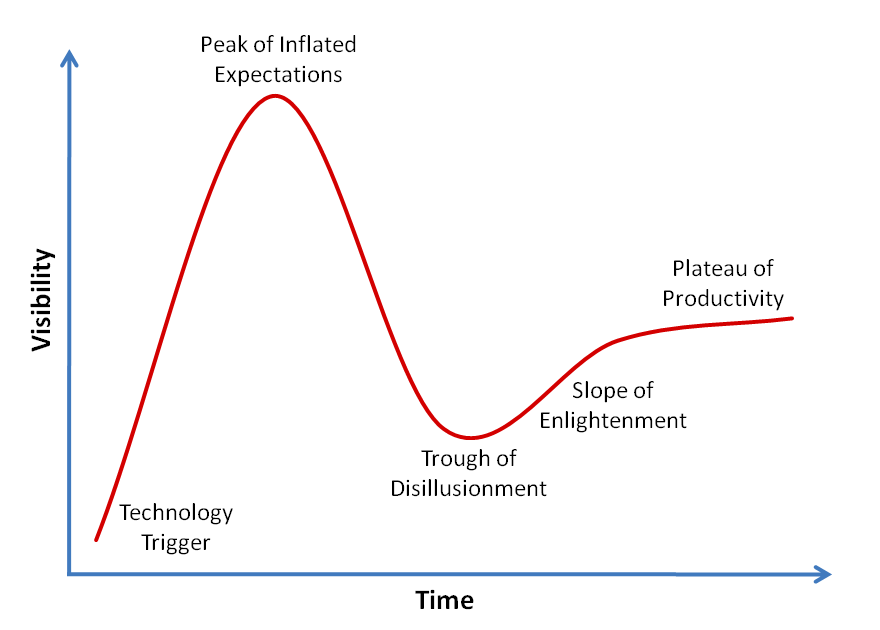In today’s market, regardless of your title – data plays a part in everyones job. If you’re in sales, you’ve got a ton of opportunities and deals to work with, more coming in every day. Support tickets flooding your customer support rep, or the “request a demo” form completions the marketers needs to pass onto sales. The tools your company uses to manage their workflow are starting to hold you back…
It’s your responsibility
You’ve been tasked with finding a solution for your team to adopt to get deeper insights and to start incorporating data into your everyday decisions.
You try a data visualization solution – sexy drag and drop features with built in integrations with the data sources you need.
The tool seems like a no brainer as it’s easy to deploy, easy to use by non-technical staff and gives them the results they need.
Your team uses it for say 6 months and get good results, until they hit a wall. You’ve outgrown the point solution. They come back to you saying they need to hire someone that is proficient in SQL and need to invest in building a data warehouse.
Point Solutions Only Get You So Far
Point solutions are great at solving one specific pain point and are usually weak on their analytical capabilities. Take for instance, a tool like Salesforce or Intercom.
These tools come with basic aggregations, simple filtering rules, but your needs might fall outside these cookie cutter reports.
This is when you’ll have to dig into the data yourself and start writing SQL queries.
I often speak to Data Science team leads that are very aware of this situation, but may not have the resources, talent or time to invest in having a robust data management practice. They will find a point solution for each function, like sales or revenue, knowing fully well that they’ll have to rip these tools out in the future.
Data Integrity is still a problem
One point solution, another point solution and now you are lost in a sea of metrics and dashboards. These metrics don’t talk to each other, and are sometimes conflicting. You never really know which metric to trust and how you are going to base your decisions.
Say you have a sales leader who creates some charts and presents them to make a case for investing in sales growth. During this presentation the marketing leader points out the number of leads his team delivered to sales are inconsistent with those presented!
The crux – your organization has just built an adhoc data warehouse with these point solutions. Without centralization of all your data from your database you are prone to making errors and have mismatches in your reporting.
To accomplish this goal, you not only need an integrated system but also a savvy SQL analyst to write queries and manage the reporting for you. Otherwise you run into the risk of “metrics debt.”
Inevitable Metrics Debt
There’s an unspoken mantra in early stage tech companies when it comes to decision making: “if it’s not a customer facing activity and it works for now then we can put it on the backlog.” When it comes to metrics, if you’re a company that’s pre-product market fit, that’s acceptable. But once you’re post product-market-fit and starting to scale, then you should invest in metrics earlier than you plan to.
Metrics debt? Seems a bit dramatic until you look at a little closer.

The famous hype graph illustrates a few of the scenarios I mentioned earlier. The blind spot most companies face is between the stages of trough of disillusionment through the plateau of productivity.
It sneaks up on you, and you often realize the problem too late. You now have to be reactive and ask yourself what questions you need to ask and which ones are the ones you haven’t asked?
For some companies it shows up when you hit a product road bump.
Your existing solution for metrics implementation needs to be completely re-instrumented to adjust to the changes of the new business requirements.
There goes hours of engineering time and your product roadmap is pushed back even further. When your metrics are poorly implemented and you have to play the guesstimation game on your numbers, you’re just digging yourself into a deeper hole. Instead of building more features to advance your product, you need to double down on the right metrics that will help you scale.
Now is the time to invest in a centralized data warehouse and the human capital that comes with it.
Investing in the Next Generation Of Data Scientists
If you’ve committed to data being of strategic value to your organization and are striving to be more data-driven: it makes sense investing in in-house talent to support your objectives.
As you are scaling up, you’re only going to collect more data and have more data problems to solve. You ARE going to need skilled data people to help you with this. You may think you are biting off more than you can chew, but taking action will help you set the right building blocks to make your organization more data driven.
We provide a free assessment of an organizations’ data needs and capabilities – contact us today to get in touch.
Photo Credits: Unsplash


